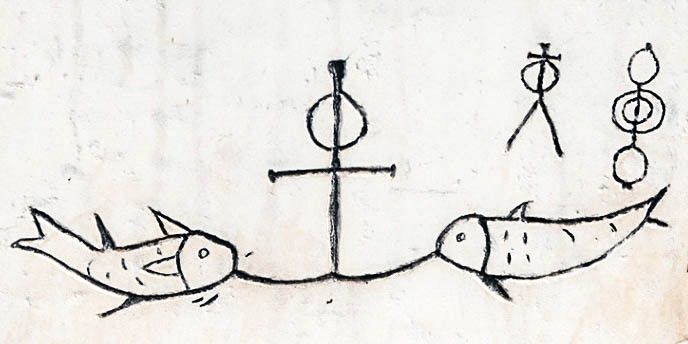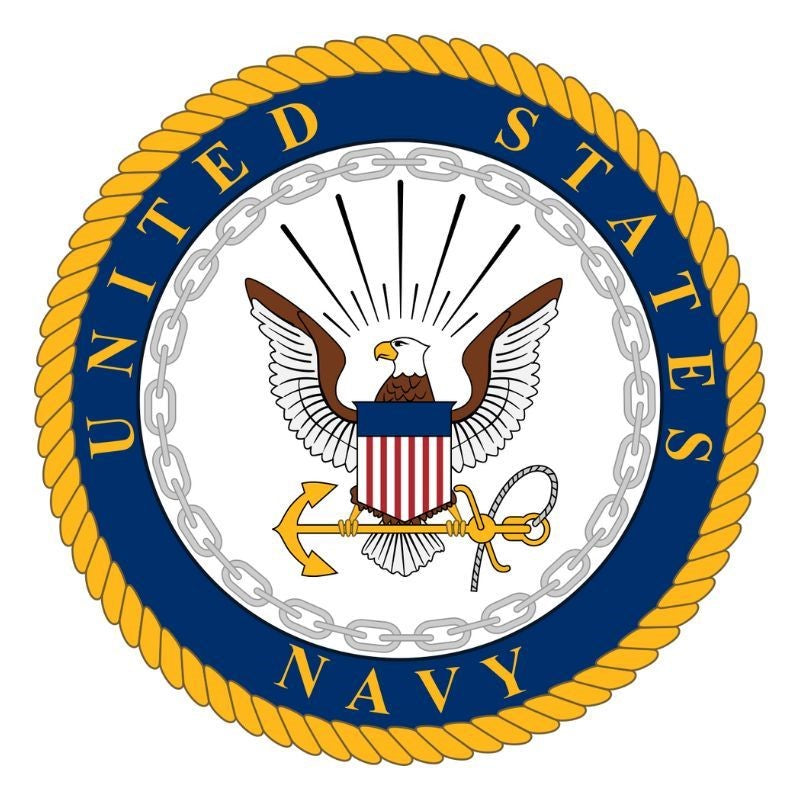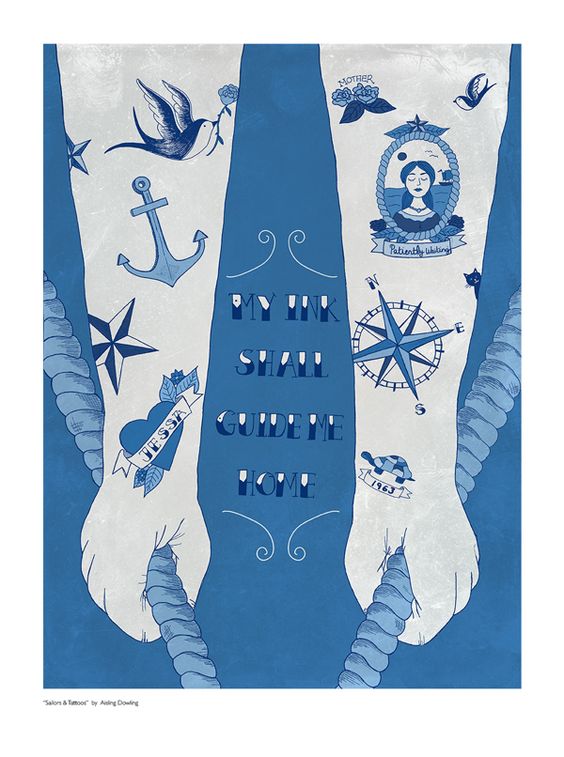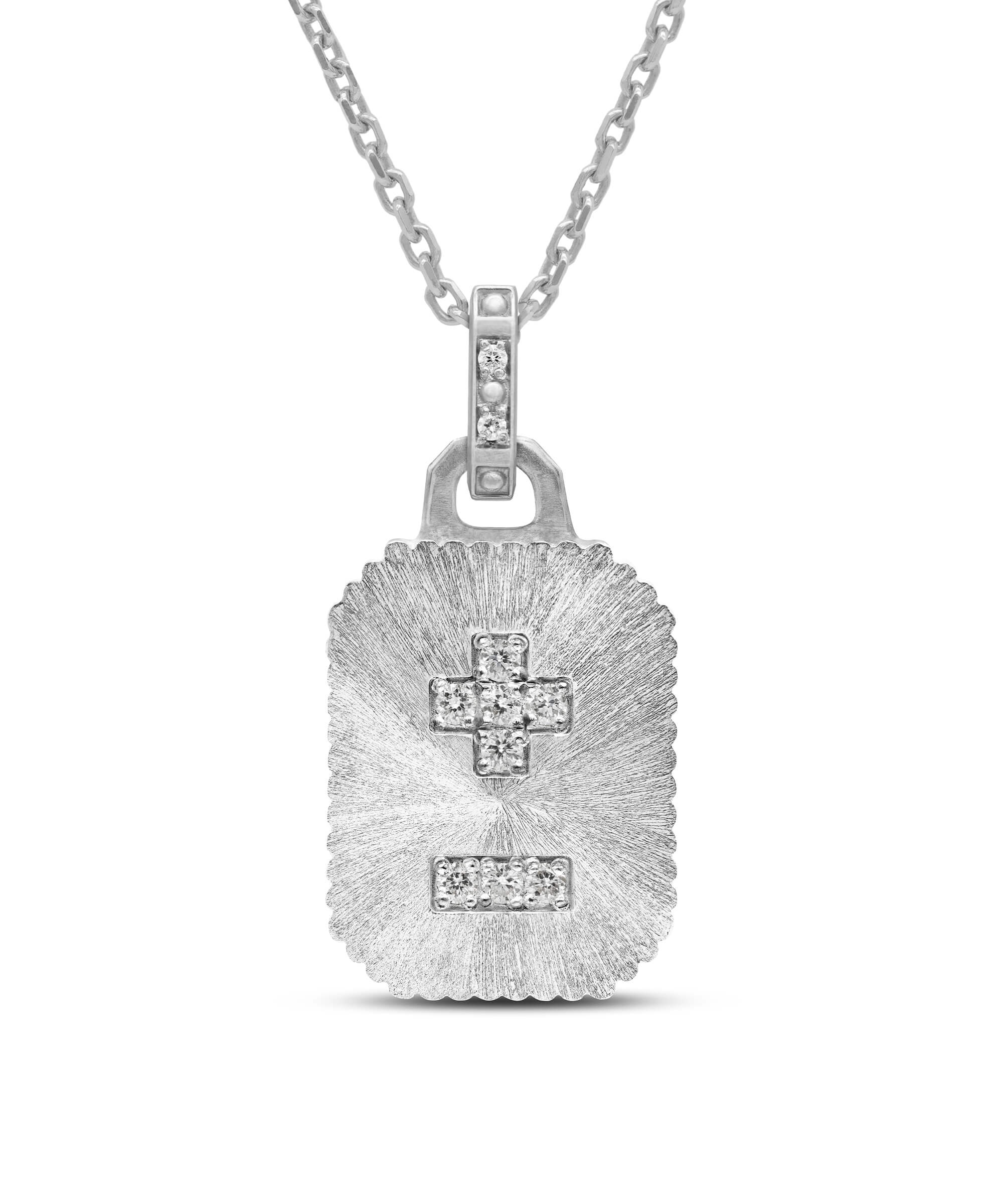The anchor has been a powerful and enduring symbol across centuries, embodying safety, stability, and hope. Rooted in ancient maritime cultures, it represented security amidst the unpredictable seas, offering sailors a lifeline to safety in the face of peril. Over time, its symbolism expanded beyond nautical traditions, becoming a universal emblem of faith, resilience, and steadfastness. During early Christianity, it covertly symbolized salvation and strength in adversity, reflecting the unwavering spirit of persecuted believers. Today, the anchor resonates as a symbol of grounding and inner strength, a reminder to remain steadfast through life’s uncertainties while offering a sense of protection and balance. Its timeless appeal continues to inspire those seeking a connection to stability, faith, and hope.
Amuletha™ Book of Symbols
Anchor Symbol
“Boy with Anchor” by Winslow Homer
Winslow Homer’s "Boy with Anchor" (1873) is a poignant watercolor that captures the quiet gravity of life along the Gloucester, Massachusetts coast. Part of a series created during the summer of 1873, the painting shifts focus from the dangers faced by fishermen to the children left behind. A massive anchor, pointing toward the sea, symbolizes the boy’s heavy maritime destiny. Homer’s mastery of technique shines in the mottled sky, achieved using his innovative blotting method—applying a wash, sprinkling breadcrumbs, and gently rubbing to leave a granulated texture. Layering transparent washes over graphite and adding dense gouache, Homer balances warm and cool tones, mirroring the emotional weight of the scene.

“Boy with Anchor” by Winslow Homer
Winslow Homer’s "Boy with Anchor" (1873) is a poignant watercolor that captures the quiet gravity of life along the Gloucester, Massachusetts coast. Part of a series created during the summer of 1873, the painting shifts focus from the dangers faced by fishermen to the children left behind. A massive anchor, pointing toward the sea, symbolizes the boy’s heavy maritime destiny. Homer’s mastery of technique shines in the mottled sky, achieved using his innovative blotting method—applying a wash, sprinkling breadcrumbs, and gently rubbing to leave a granulated texture. Layering transparent washes over graphite and adding dense gouache, Homer balances warm and cool tones, mirroring the emotional weight of the scene.
ANCHOR SYMBOL ORIGIN
The anchor has long been a powerful symbol, dating back thousands of years to ancient civilizations. Its use as a symbol originated with sailors and maritime cultures, where the anchor represented safety, stability, and hope in the unpredictable seas. The earliest recorded use of the anchor as a symbol can be traced to ancient Greece and Rome, where it was associated with Poseidon and Neptune, gods of the sea. Over time, the anchor's meaning expanded beyond its nautical roots.
During early Christianity, the anchor became a symbol of faith and hope, often used by persecuted Christians in the Roman Empire. When Christianity was practiced in secrecy, the anchor was adopted as a covert symbol representing Christ and salvation, as it resembled a cross. This made the anchor a powerful emblem of hope, steadfastness, and resilience in the face of adversity. Its ability to secure a ship amidst a storm came to symbolize the strength and stability of faith.
Today, the anchor remains a widely recognized symbol, often representing security, stability, and strength. It has also become a symbol of staying grounded in one’s beliefs, holding firm through life’s uncertainties, and providing a sense of safety and support.
What does ANCHOR symbolize
The anchor symbol, a universally revered emblem, transcends cultures and time periods, rich with profound symbolism. Here are four refined interpretations of what the heart elegantly conveys:
Stability
The anchor symbolizes stability, grounding one through life’s challenges, much like it secures a ship.
Hope
A symbol of hope, the anchor represents faith and resilience, offering strength during difficult times.
Strength
It stands for strength and perseverance, reminding us to hold firm through adversity.
Security
The anchor represents security and protection, providing a sense of safety in uncertain situations.
Cultural mention
The anchor has been a powerful symbol throughout history, representing strength, stability, and protection across various cultures. From its covert use by early Christians as a symbol of faith and hope, to its deep association with naval traditions and maritime superstitions, the anchor has held profound meaning for those seeking security in turbulent times. In this section, we’ll explore the rich cultural significance of the anchor, highlighting its role in spirituality, seafaring traditions, and its enduring presence as a symbol of resilience and protection.
The Anchor in Early Christianity
In early Christianity, the anchor became a covert symbol of faith and hope, especially during the Roman Empire's persecution of Christians. Since open expressions of Christian faith could lead to execution, early believers adopted symbols that appeared ordinary yet held deep spiritual meaning. The anchor, which resembled a cross with a horizontal bar, symbolized Christ and salvation in a way that was not obvious to outsiders. It represented steadfast faith in the promise of eternal life, anchoring the soul in hope and salvation even during the darkest times. The anchor also symbolized the stability of faith in turbulent circumstances, much like how a physical anchor keeps a ship steady in a storm. Early Christian catacombs, including those in Rome, feature anchor engravings, signifying the strength and resilience of believers in the face of oppression.
Rome, Catacombs of St Domitilla [150-200 AD]

Rome, Catacombs of St Domitilla [150-200 AD]
The Anchor in the Navy
In naval traditions worldwide, the anchor is one of the most important symbols, representing not only the literal safety of securing a ship but also a broader sense of loyalty, strength, and stability. The anchor symbolizes the sailor’s connection to the sea and their duty to protect their ship and crew. In the U.S. Navy, the anchor is an integral part of insignias and uniforms, symbolizing honor, stability, and service. It is commonly found in naval emblems, such as on the U.S. Navy’s Chief Petty Officer insignia, where the anchor symbolizes not only naval heritage but also the responsibility of leadership and duty. For sailors, the anchor serves as a reminder of their commitment to their comrades and country, anchoring them to their values and principles amidst the uncertainties of the sea.
*U.S. Navy emblem

*U.S. Navy emblem
The Anchor in Maritime Superstitions
Sailors have long revered the anchor as a good-luck charm, believing that carrying an anchor on board ensured protection during dangerous voyages. In maritime superstitions, the anchor was more than just a tool; it was believed to ward off evil spirits and prevent bad luck at sea. Sailors often carried small anchor charms or talismans, and it was common to carve anchors into ships or wear anchor jewelry as a safeguard against misfortune. This deep-rooted tradition reflects the symbolic power of the anchor as a protector against the unpredictable nature of the ocean.
Illustration by Aisling Dowling

Illustration by Aisling Dowling
Anchor symbol in the world of jewelry
Anchor jewelry is popular among a wide range of people, particularly those who value stability, resilience, and a connection to the sea. It is often worn by individuals with maritime backgrounds, such as sailors, fishermen, or those who live in coastal areas, as a symbol of their bond with the ocean. However, anchor jewelry has also become a fashionable accessory for people who seek emotional grounding or wear it as a reminder to stay steady in life’s storms. Younger generations are drawn to the anchor for its modern, minimalist aesthetic, while others may wear it for its deeper symbolism of strength, hope, and staying true to one's path. Whether worn as a necklace, bracelet, or charm, anchor jewelry speaks to those who value security and personal resilience.Gifting someone anchor jewelry carries significant meaning, often symbolizing the desire to offer stability, strength, or protection. An anchor gift can represent a wish for the recipient to remain grounded and steadfast, particularly during challenging times. It is a thoughtful gift for those starting a new chapter in life, such as a new job, a relationship, or a personal journey, reminding them to stay strong and secure in their decisions. The anchor is also a symbol of loyalty and unwavering support, making it an ideal gift between close friends, family members, or romantic partners to show lasting commitment and reliability.
Anchor SYMBOL IN LITERATURE
The anchor has long been used as a symbol in literature, representing stability, hope, and security amidst life’s uncertainties. Often appearing in poetry and prose, the anchor symbolizes a grounding force, whether it’s the moral compass that keeps a character steady, or a metaphor for the emotional support one finds in love or faith. Below are some famous literary works where the anchor plays a key symbolic role.
Moby Dick by Herman Melville
In Herman Melville’s Moby-Dick, the anchor serves as a powerful maritime symbol that reflects the precarious balance between stability and chaos at sea. As the Pequod’s crew battles both the ocean and their inner demons, the anchor becomes a metaphor for the tension between man’s desire for control and the unpredictability of nature. It represents both literal and emotional stability, anchoring the crew in their shared quest, while also highlighting the fragility of that stability as they face the dangers of the deep.
The illustration of Queequeg in Melville's 1902 edition

"The Anchor" by Henry Wadsworth Longfellow
The anchor heaves, the ship swings free,
The sails swell full. To sea, to sea!
Our one last anchor drops to stay,
And holds the world of winds at bay.
In this poem, the anchor symbolizes security and the power to keep life’s chaos in check. Longfellow uses the image of the anchor to convey a sense of stability amidst the unpredictable winds of life, offering a sense of hope and steadiness as the ship ventures into the unknown.
"The Sailor's Anchor" by William Ernest Henley
Hold fast the anchor, firm and true,
Let none dare wrench it loose from view,
For as the storm clouds gather near,
The anchor's strength will conquer fear.
Henley’s poem celebrates the anchor as a symbol of resilience and courage. In this verse, the anchor stands for unwavering strength in the face of danger, a force that provides security and protection, ensuring that one remains grounded no matter how fierce the storm becomes.
"Anchored in Love" by John Keats
My heart is anchored to your soul,
No winds of life can take control;
Though storms may howl and waters rise,
Our anchor holds beneath the skies.
Keats uses the anchor as a metaphor for enduring love, depicting it as a grounding force that keeps the relationship steady through life’s tempests. The anchor here represents the emotional bond that offers security and stability, no matter the challenges faced by the lovers.
Thoughts
Thoughts placed alongside a symbol resonate with its meaning, serving as a guide to expand your understanding of the symbol's significance in relation to your personal experiences. This approach invites a deeper contemplation of how symbolic meanings can reflect and enrich your life’s narrative, enhancing your appreciation of both the symbol and its broader implications.
Grounded Through Life - The anchor symbolizes being grounded, providing steady support during life’s unpredictable challenges, much like it steadies a ship.
Faithful Endurance - An anchor represents enduring hope, offering unwavering faith and resilience, even when faced with difficult circumstances.
Holding Steady Strong - It signifies staying strong and persevering through challenges, reminding us to maintain firmness and resolve during adversity.
Safe Harbor Symbol - The anchor symbolizes security and protection, offering a sense of safety and calm amidst life’s uncertainties and storms.
FREQUENTLY ASKED QUESTIONS
Why is the anchor associated with hope?
The anchor became a symbol of hope because, in ancient times, it provided security during storms at sea. In the Christian context, the Bible refers to hope as “an anchor for the soul” (Hebrews 6:19), further embedding the connection between anchors and hope.
What does an anchor tattoo symbolize?
Anchor tattoos are commonly associated with strength, stability, and resilience. Sailors historically got anchor tattoos as a symbol of safety and returning home. Today, many people get anchor tattoos to represent groundedness, enduring hardship, or staying true to oneself.
What is the weight of the largest anchor in the world?
The world's largest anchor, used on the Pioneering Spirit, weighs around 36,000 kilograms (about 80,000 pounds). This massive anchor is designed to provide extreme stability and security for the vessel during its operations, especially when dealing with heavy-lifting tasks like removing oil platforms or laying pipelines.













